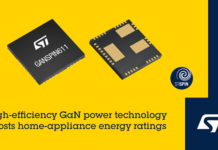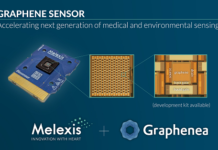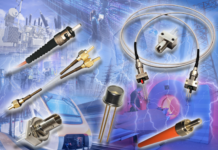
For roughly a hundred years, quartz crystal timing devices have kept countless systems in sync. However, as technology pushes into harsher environments and more demanding applications, quartz crystal vulnerabilities to temperature shifts, vibration, shock and electromagnetic interference (EMI) are harder to ignore. Environmental challenges are one factor fueling the rise of Microelectromechanical Systems (MEMS) Precision Timing devices. Accurate, compact and resilient, MEMS Precision Timing is setting a new bar for the timing industry.
MEMS Precision Timing devices are silicon-based structures built using semiconductor processes. Not only are these devices smaller than their quartz counterparts, but their resilience to environmental stressors makes them ideal across industries—AI datacenters and communications, industrial, automotive, aerospace and defense and much more. MEMS technology has become the standard for consistency and efficiency in even the most challenging conditions.
MEMS Precision Timing in Action
The impact of MEMS Precision Timing is already being felt across multiple fields. In the automotive industry, MEMS timing has been embedded into the camera systems, and other sensors like radar, for advanced driver-assistance systems (ADAS). The healthcare sector is leveraging MEMS oscillators to enable the next generation of medical devices, such as continuous glucose monitors (CGMs), where accurate, real-time data is vital for patient safety. Whether it’s AI, industrial, aerospace, or another industry, companies are adopting this technology for its reliable and resilient performance. This enhances communication and productivity, and it is enabling the boundless possibilities of Precision Timing.
Synchronizing Our Digital World
From the first sundials used by laborers in Ancient Egypt to today’s atomic clocks, humanity’s pursuit of accurate time has shaped every era of progress. The marine chronometer revolutionized navigation in the 18th century and mechanical clocks synchronized the industrial age. Each innovation has unlocked new possibilities, moving us from simply measuring time to mastering it with increasing stability and precision.
This journey from sundials to silicon is more than a chronicle of invention—it’s the story of how timekeeping became the invisible engine of human achievement. From agriculture to navigation, and now to the vast networks and devices of our interconnected world, precise time has been a constant tool for building civilization.
As the digital realm grows in complexity, so too does the need for a robust timing source. The shift from quartz to MEMS-based Precision Timing devices allows a new generation of solutions capable of meeting the speed of modern life while setting the essential rhythm for a more synchronized world.
















